The Berkshires Bowling Alley that Inspired "The Big Lebowski"
It’s been 36 years since the release of The Big Lebowski, the irreverent cult comedy by Joel and Ethan



We all love our iconic, innovative, and picturesque bridges (insert photos of the Brookly, Manhattan, and Queensboro Bridges here), but New York City is home to far more bridges, each with its own unique story to tell. Below, we round up some of the city’s “other” bridges, who have made the cut either for their obscurity, their interesting history, or their other distinguished features.

Not all bridges are built for automobiles. This steel through arch masterpiece carries Amtrak’s electrified services to/from points north of NYC. It connects Astoria, Queens to the Southern part of Randall’s Island.


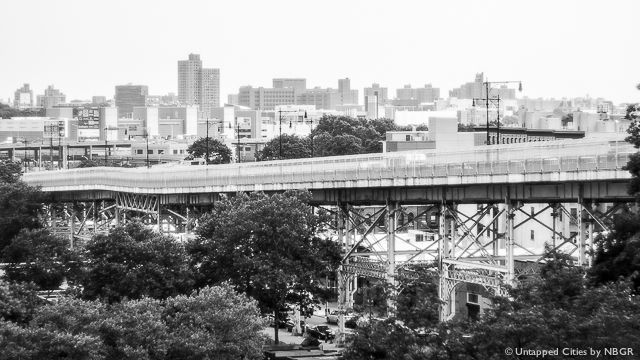
Directly connected to the Macombs Dam Bridge and designated along with its partner as an NYC Landmark in 1992, the 155th Street Viaduct distinguishes itself at the confusion of motorists. It simultaneously carries two-way traffic heading towards and coming from 155th Street to the west of an escarpment while arching over 155th Street below.

The northernmost bridge to/from Manhattan passes over the final bit of unaltered wilderness on the island before arcing over a body of water that has succumbed to engineered manipulation. Now connected to the Harlem River through the Harlem River Ship Canal, Spuyten Duyvil Creek once wrapped around Marble Hill–instead of cutting through it. While Manhattan giveth, The Bronx taketh away, and now Marble Hill is physically attached to the Bronx mainland.
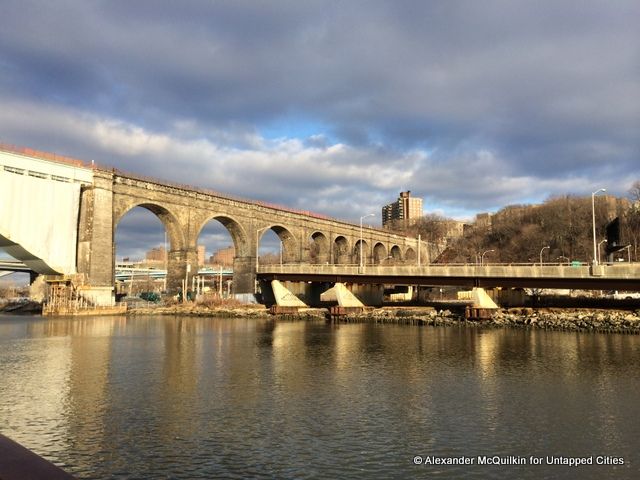
Some of the original masonry arches remain
Constructed from 1837-48, New York’s oldest surviving bridge has carried water from the Croton Aqueduct as well as pedestrians. A renovation in the late 1920s saw many of the bridge’s masonry arches become replaced with a single steel arch. It’s been closed to pedestrians since the 1970s, with an expected reopening later this year.


The Outerbridge Crossing is arguably the most isolated bridge in NYC, as it is at the very Southern tip of New York State. This bridge in fact derives its name from the first chairman of the Port of New York Authority (now Port Authority of NY-NJ), Eugenius Harvey Outerbridge. City officials really used their noggin in naming this one, opting for the suffix “Crossing” instead of “Bridge” to avoid redundancy. If only city officials could put their heads together to help better maintain it…
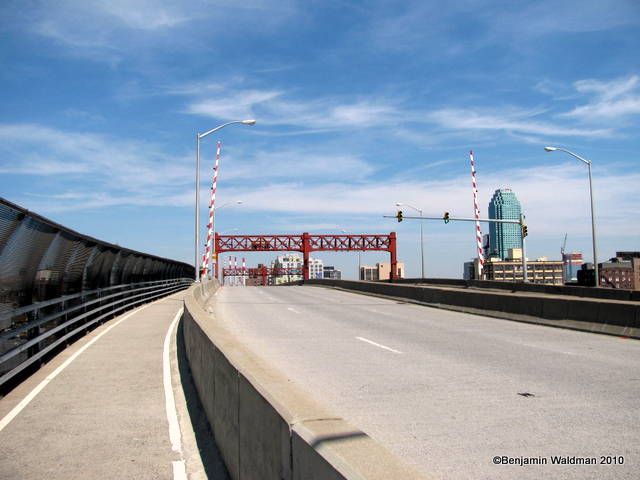
Traversing one of the more disgusting bodies of water in America (perhaps losing only to the Gowanus Canal) the Pulaski Bridge is the savior for commuters who rely on shuttle buses when the G train is closed due to maintenance from Superstorm Sandy damages. The bridge crosses Newtown Creek, the tiny body of water which divides Brooklyn and Queens. After an Exxon Oil Spill in the 1950s, 17-30 million gallons of oil spilled 25 feet deep into the river. The Pulaski Bridge also serves as the approximate midway point for the NYC Marathon.
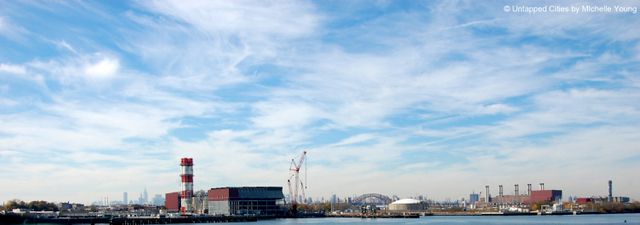
Your trip to NYC’s central prison on Rikers Island is more convenient than you think. Just ask Flava Flav, who wrote a ditty about this bridge called “The Bridge of Pain.” As the only physical link to another landmass from Rikers Island, the bridge also carries the Q100 bus route. Get this stunning view as you cross the Rikers Island Bridge:
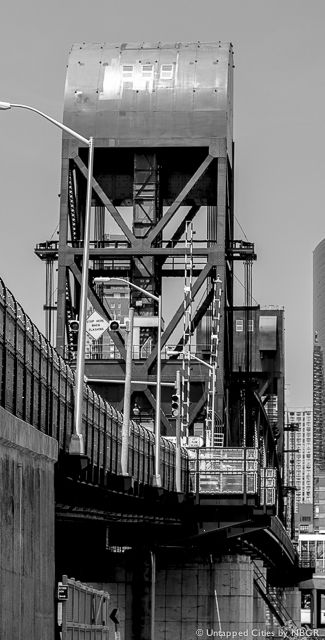
The tram isn’t the only way to Roosevelt Island, and this automotive/pedestrian bridge also carries the Q102 bus route from the Queens side of the East River. While on Roosevelt Island, don’t miss the abandoned (but landmarked ruin) that is the former smallpox hospital, Four Freedoms Park, or the Blackwell Island lighthouse at the opposite end.

A pedestrian and cycling bridge with a vertical lift component in its mid section, the Wards Island bridge is now open 24/7 since 2012.
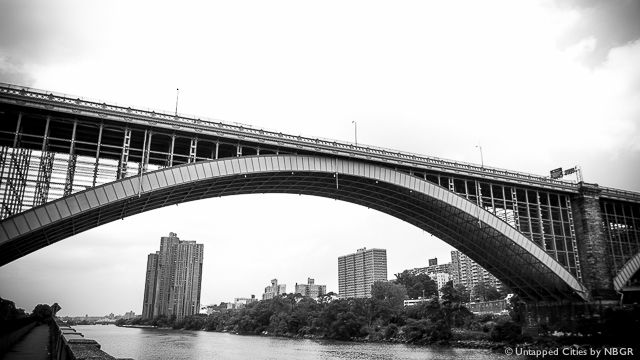
Not to be confused with nearby neighbor, the George Washington Bridge. The Washington Bridge carries six lanes of traffic and runs between Manhattan and the Bronx. It connects 181st street in Manhattan to the Morris Heights neighborhood of the Bronx.
You may have heard enough about bridges, but what about tunnels? Check out our vintage photos of the Holland Tunnel. Also, see more photos from the Henry Hudson Bridge here.
Get in touch with the author @thisisnotreale
Subscribe to our newsletter